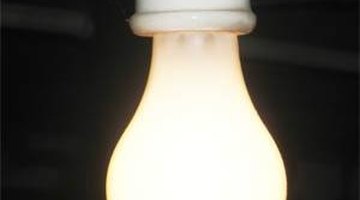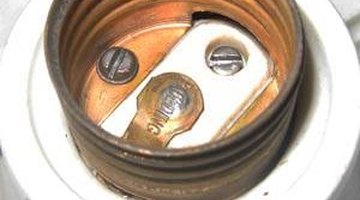How Does a Light Bulb Socket Work?
You might not know it by looking at it, but the common screw-in light socket is a clever application of physics and precision manufacturing. The socket is designed to get electricity from household wiring to a light bulb without danger and to make replacing the bulb easy.

Precision Equals Safe Light

Parts of a Socket
When you look inside a screw base you see two major parts: A threaded outer area, and a small contact point or strip that will touch the bottom of the bulb. That center point is the socket's hot electrical contact point, and the larger threaded area is the neutral conductor.
Threads
The threads in a light socket are precisely crafted to hold threaded portion of the bulb base and to carry electricity. If the threading were any smaller, you couldn't get the bulb in---too large and poor contact could cause sparks or overheating.
Points of Contact
The threads provide a large surface area for conducting electricity, but more importantly they ensure that the center points of the bulb and socket make firm contact.
Writer Bio
John Vincent has been freelance writing since 1997. He has worked in television for the CONUS All News Channel, newspaper for "City Pages" and "Siren" and online news at KARE 11 TV and the St. Paul Pioneer Press. Vincent has a Bachelor of Arts in journalism from the University of Minnesota.
Photo Credits
- All images J.D. Vincent
- All images J.D. Vincent
More Articles



